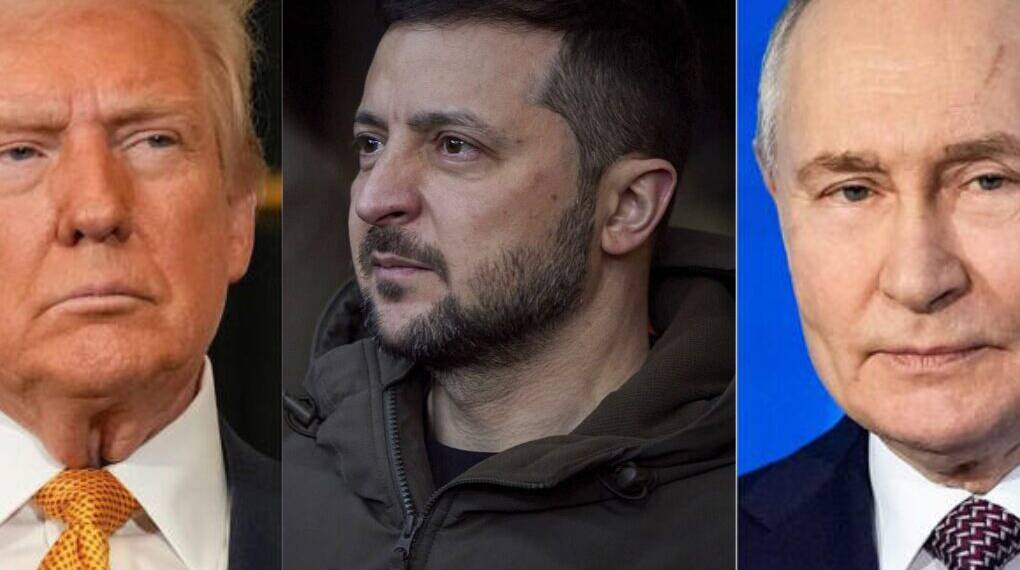In a dramatic escalation of pressure on Moscow, U.S. President Donald Trump on Monday warned that the United States would impose 100% tariffs on Russian goods if Russia fails to reach a ceasefire deal with Ukraine within 50 days. The warning, delivered during a joint appearance with NATO Chief Mark Rutte at the White House, marks a significant shift in Trump’s approach to the Russia-Ukraine conflict.
“I use trade for a lot of things,” Trump told reporters. “But it’s great for settling wars.”
The ultimatum underscores growing U.S. frustration over failed peace negotiations, as well as Trump’s apparent shift from previously warm rhetoric toward Russian President Vladimir Putin.
Weapons for Peace?
Alongside the tariff threat, Trump announced a major new military aid package for Ukraine, including Patriot air defence missile systems. According to Trump, the U.S. and its NATO allies will supply Ukraine with a “full complement” of missile batteries, expected to arrive within days.
“We’re going to make top-of-the-line weapons, and they’ll be sent to NATO,” Trump said, clarifying that America’s NATO partners will bear the cost. “One country has 17 Patriots ready to be shipped… we’re working on a deal to redirect a big portion of that to the war site.”
NATO Chief Mark Rutte echoed support, saying European allies such as Germany, the UK, and the Nordic countries are coordinating to bolster Ukrainian defence capabilities.
Secondary Sanctions & Market Reaction
The 50-day grace period before imposing tariffs drew surprise from global markets, with the Russian rouble stabilizing and stocks recovering slightly. A White House official later clarified the tariffs would apply not only to Russian goods but could include secondary sanctions on countries that continue trading with Russia, particularly in the oil and energy sectors.
“We’re going to be doing secondary tariffs,” Trump emphasized. “If we don’t have a deal in 50 days… they’ll be at 100%.”
This is the first time Trump has explicitly threatened secondary sanctions, a policy that lawmakers from both U.S. parties have been urging. A bipartisan bill giving Trump the authority to impose up to 500% tariffs on nations aiding Russia is currently pending in the Senate, awaiting Trump’s go-ahead.
Trump’s Shift on Putin and Zelenskyy
Trump’s remarks signal a marked change in tone from earlier in his presidency, where he had shown admiration for Putin and skepticism of Ukraine. Now, he says he is “very disappointed” in the Russian leader.
“He’ll talk so beautifully,” Trump said of Putin, “and then he’ll bomb people at night. We don’t like that.”
On the other hand, his stance toward Ukrainian President Volodymyr Zelenskyy has softened. After a public spat earlier this year, Trump is now sending high-end air defense systems and has personally spoken with Zelenskyy.
Critics Slam Tariff Threat as Hollow
However, Trump’s threat of 100% tariffs faced swift backlash. Leading economist Justin Wolfers mocked the policy as meaningless, given the steep drop in U.S.–Russia trade since 2022.
“A 100% tariff on almost nothing will do almost nothing,” Wolfers wrote on X (formerly Twitter), sharing data that shows U.S. imports from Russia fell from $29.6 billion in 2021 to just $3 billion in 2024.
Critics accuse Trump of using tariffs to project strength while avoiding more substantive military or diplomatic engagement.
“How to sound tough but do nothing: Impose tariffs on a country where we already impose sanctions,” Wolfers added.
Putin, Ceasefire, and Political Optics
Despite Trump’s threats, the Kremlin responded cautiously. A spokesperson said Putin “appreciates Trump’s willingness to seek peace,” but there was no formal reaction to the 50-day ultimatum.
Ukrainian officials welcomed the weapons but voiced skepticism over Trump’s long-term intentions. “I am pleased European leaders swayed him,” said Kyiv resident Denys Podilchuk, “but we don’t know how long that will last.”
U.N. Secretary-General Antonio Guterres reiterated calls for an immediate ceasefire, welcoming “any move that aligns with international law and helps end the bloodshed.”
Trump’s 100% tariff threat may be more symbolic than substantive, given limited trade with Russia, but it highlights a broader recalibration in U.S. strategy: increased military support to Ukraine, pressure on nations still buying Russian exports, and a public pivot away from appeasing Putin.
Whether this marks a genuine policy shift or a political maneuver ahead of the 2026 midterms remains to be seen.








